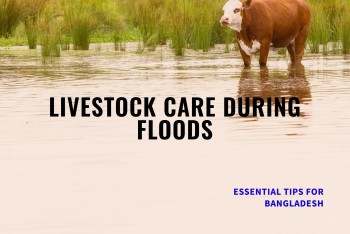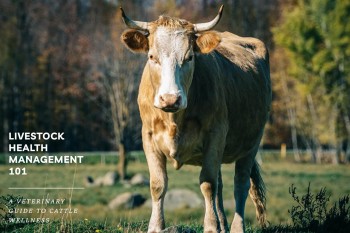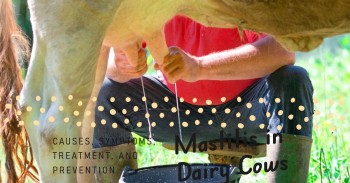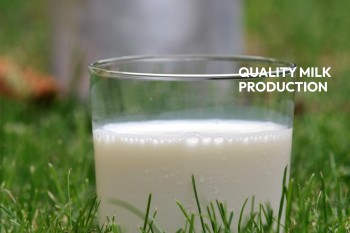Dermatophytosis ("Ringworm"):
Understanding and Managing The Fungal Infection In Cattle 🐄🍄
Causes of Dermatophytosis
Dermatophytosis, commonly known as
"ringworm," is a highly prevalent skin infection that affects dairy
calves and occasionally adult cows. The primary pathogen responsible for this
condition is Trichophyton verrucosum, although other dermatophytes like
Trichophyton mentagrophytes can also be involved. The infection is most
commonly observed in calves between the ages of 2 months and the yearling
stage. This coincides with the period when young dairy animals are grouped
together rather than managed individually. Dermatophytes are hardy organisms
that can survive on inanimate objects, bedding, and soil for months, even after
the removal of infected cattle. Concentration or grouping of young cattle,
especially during winter months, increases the incidence of ringworm in
affected herds. Farms with a history of ringworm often experience yearly
epidemics in heifers. Conversely, herds that have not encountered clinical
ringworm remain free from the problem unless new infected animals are
introduced. Interestingly, adult cows may also suffer from severe ringworm
infections, particularly during winter months when freshening heifers carrying
the infection are introduced into the milking herd. The assumption that adult
cows that had ringworm as calves are "immune for life" is challenged
by the occurrence of outbreaks in adult cattle, raising questions about the
longevity of natural immunity following exposure.
Understanding the Mechanisms of Dermatophyte
Infection
Dermatophytes primarily affect
the keratinized layers of the skin, releasing toxins and allergens that lead to
exudation, crusting, and alopecia. The fungi themselves do not invade the
deeper tissues and thrive best when they provoke minimal host inflammatory
responses. The lesions typically exhibit an oval or circular shape and often
appear in multiple locations. The incubation period ranges from 1 to 4 weeks,
with the lesions persisting for 1 to 3 months in most cases. Infection through
direct contact is accelerated by mechanical skin irritation caused by
contaminated objects. Stanchions, neck straps, halters, milking straps,
brushes, curry combs, chutes, and other shared devices can contribute to the
spread of the infection among a group of cattle.
Cattle that are chronically ill,
unthrifty, poorly nourished, or acutely sick tend to display diffuse or rapidly
progressive lesions compared to their healthy herdmates. This suggests the
involvement of both cellular and humoral factors that contribute to the
worsening of dermatophytosis. Calves persistently infected with Bovine Viral
Diarrhea Virus (BVDV) or affected by Bovine Leukocyte Adhesion Deficiency
(BLAD) often develop severe ringworm lesions, while their healthy herdmates
either remain unaffected or exhibit only mild lesions. Adult cows or heifers
with typical ringworm lesions may experience the progression of diffuse lesions
when stressed by severe acute infections like pneumonia or peritonitis. The use
of exogenous corticosteroids can also exacerbate existing ringworm lesions.
Another proposed contributing factor is the lack of sunlight, as animals housed
indoors appear to have a higher incidence of ringworm. This theory led some
veterinarians to administer vitamins A and D as a treatment. However, the
occurrence of ringworm in both calves and adult cows during the summer months
diminishes the importance of sunlight in prevention or cure.
Identifying Signs of Dermatophytosis
Ringworm lesions in calves
typically manifest as round or oval areas of crusting and alopecia, ranging
from 1.0 to 5.0 cm in diameter. Early lesions may appear raised due to serum
oozing or secondary bacterial pyoderma beneath the crust. The periocular
region, ears, muzzle, neck, and trunk are the most commonly affected areas in
calves, although lesions can occur anywhere on the body. Head and neck lesions
are particularly prevalent due to contact with contaminated lock-ins,
stanchions, or neck straps. Posts or beams used for scratching may provide a
source of infection for a group of heifers, leading to lesions on the trunk.
The escutcheon, located near the udder, is another area frequently affected by
ringworm. While the skin lesions may be painful, they are rarely pruritic
(itchy). In adult cattle, ringworm lesions can appear anywhere on the body, but
they are more commonly found on the trunk and neck. Facial lesions, which are
typical in calves, are less frequent in adult cows. In addition to the oval and
circular lesions, larger geographic lesions may occasionally develop in adult
cattle. During ringworm outbreaks in adult cattle, individual cows experiencing
unrelated systemic illnesses may exhibit a dramatic worsening of their ringworm
lesions. Ketotic cattle treated with corticosteroids may also show an
aggravation of their ringworm condition. Furthermore, adult cattle may develop
lesions on their udder, flank, or hind limbs, increasing the risk of zoonotic
transmission as these areas come into contact with milkers. It is not uncommon
for milkers or handlers of infected cattle to develop ringworm lesions
themselves. Ringworm is the most common example of a zoonotic disease
encountered in cattle practice.
Accurate Diagnosis of Dermatophytosis
While cultures of hair from the
peripheral zone of a lesion on selective media such as dermatophyte test
medium, scrapings of lesions for mineral oil or potassium hydroxide preps, or
skin biopsies can be used to confirm the diagnosis, clinical signs are typically
sufficient for identification. Early lesions may resemble warts or other skin
conditions due to their raised appearance, but careful examination can
differentiate them from other lesions.
Treatment Approaches for Dermatophytosis
Assessing the efficacy of
treatment for ringworm can be challenging due to the self-limiting nature of
the infection in most healthy cattle. Controlled studies are necessary to
validate the effectiveness of any product against ringworm. Treatment is often
sought due to the zoonotic potential of the infection or because an affected
heifer or cow needs to participate in a show or sale. Animals with ringworm,
like those with warts, are ineligible for admission to shows or sales. This
situation often leads to the sudden urgency of treating ringworm, even though
the infection may have been present for months.
Before discussing various
treatments, it is important to acknowledge the labor-intensive nature of
managing hundreds of ringworm lesions in a group of calves, heifers, or cows.
The difficulties in catching, restraining, and treating groups of heifers can
contribute to treatment failures or a lack of owner interest.
Treatment typically focuses on
selected animals that need to be "cured" to ensure their
participation in fairs or shows. Owners who are willing to treat their calves
should also receive education on disinfection and prevention measures.
Effective Topical Treatments:
1. Lime sulfur (2% to 5%
concentration): Applied as a spray or dip daily for 5 days, followed by weekly
treatments until the infection is cured.
2. Sodium hypochlorite (0.5%
concentration): Applied as a spray or dip daily for 5 days, followed by weekly
treatments until the infection is cured.
3. Enilconazole (0.02%
concentration): Applied as a spray or dip daily for 5 days, followed by weekly
treatments until the infection is cured.
Topical Treatments for Limited Lesions or Selective Treatment:
1. Lime sulfur, sodium
hypochlorite, or enilconazole (same concentrations as above): Applied or
sprayed topically on affected areas.
2. Thiabendazole paste (3% to 5%
concentration): Applied once or twice daily on limited lesions.
3. Miconazole or clotrimazole
cream: Applied once or twice daily on limited lesions.
Systemic Treatment:
1. Griseofulvin: Administered
orally at a dosage of 20 to 60 mg/kg for 7 or more days. It's important to note
that griseofulvin is not approved for use in cattle.
Potentially Efficacious Systemic Treatments:
1. Sodium iodide (20% solution):
Administered intravenously (IV) at a dose of 150 cc per 450 kg, repeated in 3
to 4 days.
2. Vitamins A and D: Only
indicated if animals have been kept completely out of sunlight. Best results
are achieved when animals treated with any of the aforementioned products have
their lesions scraped or brushed to remove the infective crusts. Clipping may
also be beneficial, but it carries the risk of spreading the infection.
Brushes, curry combs, and clippers used on infected animals should be
thoroughly cleaned and disinfected. Workers handling the cattle should wear
gloves or wash their hands thoroughly after handling the animals using an
iodophor or tincture of green soap. Disinfecting premises and fomites offers
the best opportunity to prevent future outbreaks. Physical cleansing and
pressure spraying, followed by disinfection using lime sulfur or Clorox, can be
effective. After disinfection, the premises should be allowed to dry and
supplied with new bedding. Only animals without detectable lesions should be
reintroduced. Vaccines have been developed in certain parts of the world and
have shown efficacy in preventing and managing dermatophytosis.
Managing Dermatophytosis for the Health of Your Cattle 🐄🍄
Understanding the causes, signs,
and treatment options for dermatophytosis is essential for effectively managing
this fungal infection in cattle. Implementing proper treatment protocols,
whether topical or systemic, can aid in the healing process and prevent the spread
of the infection to other animals and humans. Additionally, emphasizing good
hygiene practices, such as disinfection and prevention measures, is crucial to
avoid future outbreaks. Regular veterinary consultations and adherence to
vaccination programs can further contribute to the overall health and
well-being of your cattle. By staying proactive and prioritizing the management
of dermatophytosis, you can ensure a healthy herd and a thriving farming
operation.


















